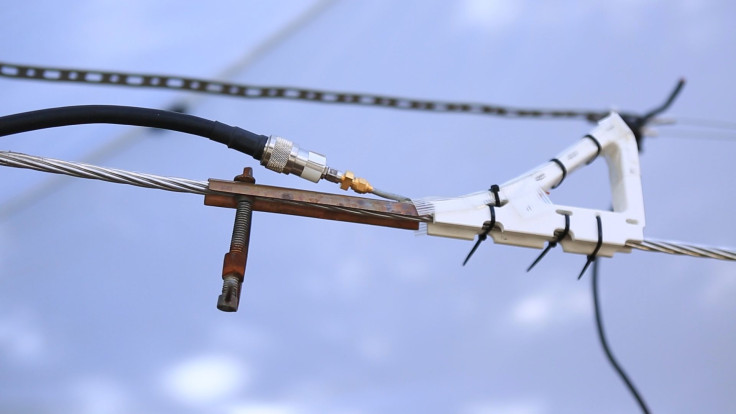Internet From Power Lines? AT&T Unveils New Millimeter Wave Technology Project

AT&T has announced a project that can potentially offer low-cost and multi-gigabit Internet connectivity to urban, rural and underserved parts of the world. Called Project AirGig, the wireless technology consists of using traditional power lines to deliver ultra-fast wireless connectivity to a home or handheld device using a special transmitter. AT&T Labs will be field testing AirGig, which is faster than standard broadband, in 2017.
“Project AirGig has tremendous potential to transform internet access globally – well beyond our current broadband footprint and not just in the United States,” said John Donovan, AT&T’s chief strategy officer and group president, in a statement. “The results we’ve seen from our outdoor labs testing have been encouraging, especially as you think about where we’re heading in a 5G world. To that end, we’re looking at the right global location to trial this new technology next year.”
While AT&T has not revealed the specifics of how the patent-pending technology works, the gist entails attaching antennas to power lines. Using a millimeter wave frequency, 4G LTE and 5G multi-gigabit internet is delivered to devices without using power from the power line. “We’re experimenting with multiple ways to send a modulated radio signal around or near medium-voltage power lines,” wrote AT&T in a press release.
According to AT&T, this technology is advantageous for three reasons: it requires little hardware, the deployment costs are minimal and it maintains high signal quality. “Project AirGig delivers this last-mile access without any new fiber-to-the-home and it is flexible enough to be configured with small cells or distributed antenna systems,” writes AT&T. “No need to build new towers. No need to bury new cables in the ground.”
In addition to providing Internet to urban, rural and underserved regions, AT&T says AirGig can be useful to utility companies, who can use the technology for smart-grid applications. Power companies can also use AirGig to pinpoint locations and it can potentially support a company's meters.

AT&T is not the first to delve into the wireless technology arena, as Google, Facebook and Aereo have been exploring the field for some time now. Alphabet, Google’s parent company, has been exploring gigabit Wi-Fi technology, called Google Fiber, since 2014. Earlier this year, Google Fiber was headed to San Francisco.
"To date, we’ve focused mostly on building fiber-optic networks from scratch," wrote Michael Slinger, Google Fiber's business operations director, in a blog post at the time. "Now, as Google Fiber grows, we’re looking for more ways to serve cities of different shapes and sizes."
Facebook’s version, called Terragraph, is being tested at the company’s Menlo Park headquarters. Facebook has described the technology as a "multi-node wireless system focused on bringing high-speed internet connectivity to dense urban areas."
© Copyright IBTimes 2024. All rights reserved.






















